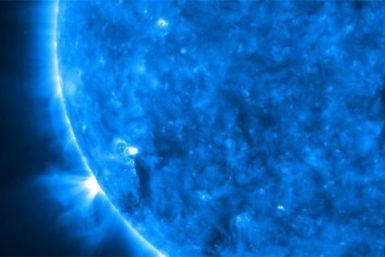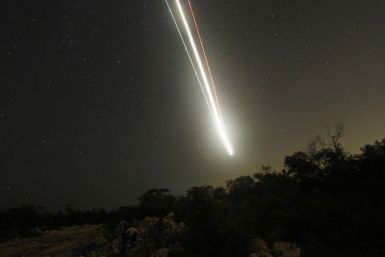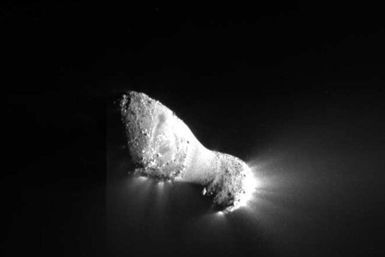NASA has released some rare unseen pictures of the Sun from a new satellite designed to predict disruptive solar storms.
NASA spacecraft Atlantis is gearing up for the scheduled July 8 launch to the International Space Station.
The NASA Extreme Environment Mission Operations project (NEEMO) will send a set of diving crew to live in Aquarius underwater research laboratory located near Key Largo, Florida during October to test the equipment and operational concepts needed for exploration to near-Earth asteroids.
NASA spacecraft Atlantis is gearing up for the scheduled July 8 launch to the International Space Station. The STS-135 crew members climbed aboard the space shuttle for the countdown dress rehearsal.
NASA space shuttle Atlantis is getting ready for its targeted July 8 launch to the International Space Station, which will end the 30-year space shuttle program. The shuttle is expected to launch on July 8 at 11:26 am EDT.
NASA welcomed a pair of ‘spidernauts’ into space aboard its penultimate shuttle mission in May. How differently will spiders behave in space? This interesting investigation is part of a K-12 curriculum and students will be able to answer to such a question, when school is back in session.
The crew of the Atlantis shuttle is preparing for NASA's final space hustle flight. The event is set for July. The trip will last for 12 days, during which 8,000 pounds of spare parts will be delivered to the International Space Station.
If some distant galaxies, after being awake many billions of years, do feel tired you could hardly blame them. But if they were caught sleeping 12 billion light years without forming stars what will you do?
Mark Kelly, the astronaut and husband of recovering Rep. Gabrielle Giffords, announced his retirement from the Navy and NASA Tuesday saying he plans to focus on his wife's recovery and work with her to pen a memoir.
The June Bootids, a meteor shower occurring roughly between June 22 and July 2 every year, is predicted to be less active this year.
NASA's Voyager 1 spacecraft is about to leave the sun's territory to enter the inter-stellar space. NASA's twin spacecrafts Voyager 1 and Cassini reached edge of the solar system sooner than expected which means the boundary of solar system is smaller than what scientists had earlier speculated. Voyager 1's exit is expected to give astrophysicists new data accounts of life outside the solar system.
NASA was able to complete its second-closest meeting with Saturn’s icy moon Helene with its Cassini orbiter on Monday according to the Jet Propulsion Laboratory.
NASA space shuttle Atlantis is getting ready for its targeted July 8 launch to the International Space Station, which will close 30 years of the space shuttle program. The shuttle is expected to launch on July 8 at 11:26 am EDT.
Scientists first became intrigued on March 28 by a long-lasting flash of high-energy gamma ray radiation burst from 3.8 billion light-years away. Now, they think they’ve determined the source of it, namely a star swallowed and shredded by a monster black hole.
A powerful burst of gamma rays first detected by NASA in late March this year may have been due to a Sun-sized star falling into the massive black hole and being ripped apart, which is believed to occur only once every 100 million years.
A hungry black hole far out in the cosmos, about 4 billion miles from Earth, got into an unusual feeding spree when a massive Sun-like star crossed its path, or to be accurate, passed by its gravitational sphere. The massive star was ripped apart, shredded into pieces as the giant black hole devoured it, unleashing some of the most powerful gamma ray flashes astronomers have ever seen. For the black hole,
Thousands of Greeks marched on parliament on Saturday in a show of unabated public anger after Prime Minister George Papandreou reshuffled his cabinet and vowed to push on with a belt-tightening campaign.
An exciting discovery by ESA's Herschel Space Observatory reveals a young sun-like star shooting jets of water into space at a speed of 124,000 miles per hour.
Based on the data from its Spacecraft MESSENGER, NASA scientists have made some surprising discoveries about the planet Mercury. The spacecraft, first ever to orbit Mercury, is providing scientists important clues to the origin of the planet and its geological history to better understand its dynamic interior and exterior processes.
Scientists who analyzed the images of Comet Hartley 2, which was collected by the Deep Impact spacecraft in a comet flyby last year, are puzzled over some quirky features of the little comet. It has been found that Comet Hartley 2 spews out more material than a comet just under a mile wide is expected to, space.com has reported. While comets usually rotate slowly in one direction, Hartley 2 spins rapidly as it tumbles.
A telescope high atop a volcano peak in Hawaii has discovered a newfound comet which will make its closest pass by Earth in 2013 and should be visible to the naked eye, said astronomers.
Flashing gamma rays observed in March from a supermassive black hole have been traced to a star falling into the massive black hole and being ripped apart, astronomers say.









































